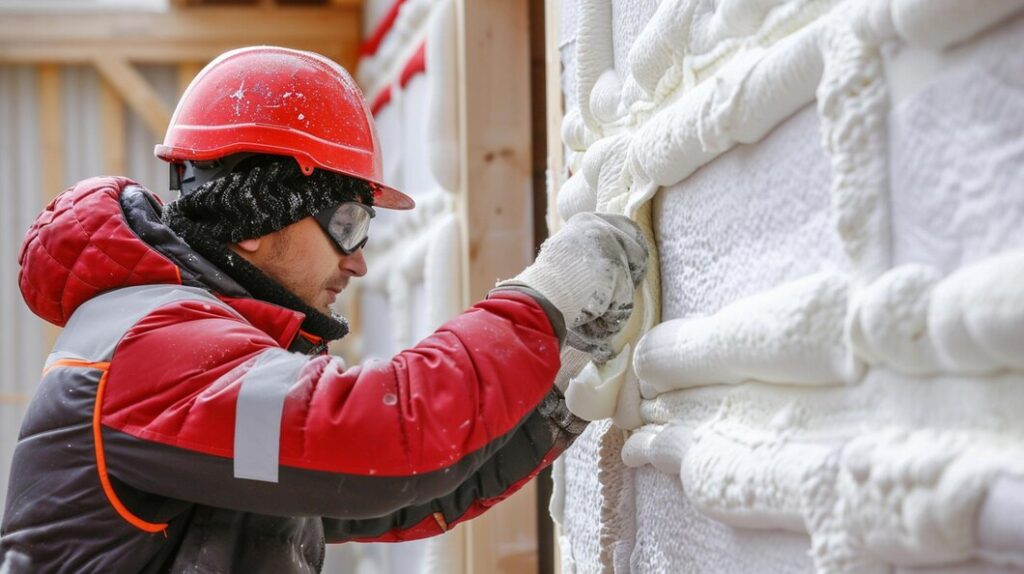Is your home losing heat in winter or becoming unbearably hot in summer? With the right insulation, you can maintain a comfortable indoor temperature all year round. Home insulation isn’t just about comfort; it’s also about energy efficiency and saving money on utility bills. For homeowners, DIY enthusiasts, and those keen on energy efficiency, foam insulation is a revolutionary solution. But how do you choose the best foam insulation for your home? Let’s explore the options available and find out which one is perfect for your needs.
Understanding Different Types of Foam Insulation
Foam insulation comes in two primary types—open-cell and closed-cell. Each has unique properties, making them suitable for different applications.
Open-Cell Foam Insulation
Open-cell foam is lightweight and flexible. It’s composed of cells that aren’t completely encapsulated, allowing air to fill the gaps. This makes it an excellent option for soundproofing.
- Pros: Open-cell foam is more affordable and provides excellent sound absorption. It’s also easier to install in hard-to-reach areas.
- Cons: However, open-cell foam has a lower R-value (thermal resistance) compared to closed-cell foam. This means it’s less effective at insulating against extreme temperatures.
Closed-Cell Foam Insulation
In contrast, closed-cell foam is denser and more rigid. Its cells are completely enclosed, preventing air or moisture from entering.
- Pros: Closed-cell foam boasts a higher R-value, making it more efficient at preventing heat transfer. It also adds structural strength to walls and ceilings.
- Cons: On the downside, closed-cell foam is more expensive and requires professional installation due to its density.
Best Foam Insulation for Different Home Areas
Choosing the right foam insulation depends on the specific area of your home. Here’s a breakdown of the best options for attics, walls, and crawl spaces.
Attics
Attics are a common place for heat loss. Open-cell foam is generally recommended here because it expands to fill gaps and provides excellent coverage.
- Factors to Consider: In an attic, moisture control is crucial. Ensure the foam used can resist moisture to prevent mold growth.
Walls
For walls, closed-cell foam is often the better choice. Its high R-value ensures better insulation, and its rigidity adds structural integrity.
- Factors to Consider: The foam’s ability to expand and seal all crevices is essential for preventing drafts.
Crawl Spaces
Crawl spaces benefit significantly from closed-cell foam due to its moisture resistance and high R-value.
- Factors to Consider: The insulation should be able to withstand damp conditions without deteriorating over time.
DIY vs. Professional Installation
Many DIY enthusiasts wonder if they can install foam insulation themselves. While it’s possible, there are considerations to keep in mind.
DIY Foam Insulation
DIY foam insulation kits are available for those who are handy and want to save on labor costs.
- Advantages: The primary benefit is cost savings. You also have the flexibility to work at your own pace.
- Challenges: However, achieving even coverage and proper thickness can be challenging. Mistakes can lead to gaps in insulation, reducing effectiveness.
Professional Installation
Hiring professionals ensures that the insulation is applied correctly and efficiently.

- Advantages: Professionals bring expertise and experience, ensuring optimal insulation performance. They also have access to high-quality materials and equipment.
- Drawbacks: The main drawback is the higher upfront cost.
Cost Analysis
Understanding the cost implications of foam insulation is crucial for making an informed decision.
Initial Costs
Closed-cell foam is more expensive upfront compared to open-cell foam. However, both types can save you money in the long run through reduced energy bills.
Long-Term Savings
Foam insulation can lead to significant energy savings. Homes with foam insulation often see a reduction in heating and cooling costs by up to 50%.
Comparison with Other Insulation Types
Foam insulation generally offers better performance than traditional fiberglass or cellulose insulation, justifying its higher cost over time.
Environmental Impact
Today’s homeowners are increasingly concerned about the environmental impact of their choices. Here’s how foam insulation measures up.
Eco-Friendliness
Some foam insulation products are made with environmentally friendly materials and have a lower carbon footprint.
Indoor Air Quality
Foam insulation can improve indoor air quality by reducing drafts and preventing pollutants from entering the home.
Case Studies and Testimonials
Hearing from others who have used foam insulation can provide valuable insights.
Real-Life Examples
One homeowner from Boston shared how switching to closed-cell foam insulation reduced their winter heating bills by 40%. Another in California used open-cell foam in their attic and noticed a significant drop in outside noise.
Insights
These testimonials highlight the significant improvements in comfort and energy efficiency that foam insulation can bring.
Conclusion
Choosing the best foam insulation for your home is a crucial step toward achieving energy efficiency and comfort. Whether you opt for open-cell or closed-cell foam, the key is to consider the specific needs of each area of your home. For those who prefer a hands-on approach, DIY kits are available. However, for optimal results, professional installation is recommended.
Ready to make your home more energy-efficient? Consult with our experts to find the best foam insulation solution for your needs. Share your experiences or ask questions in the comments below!


